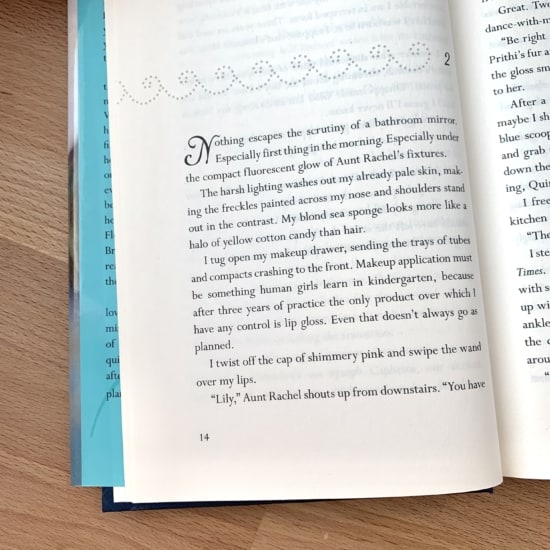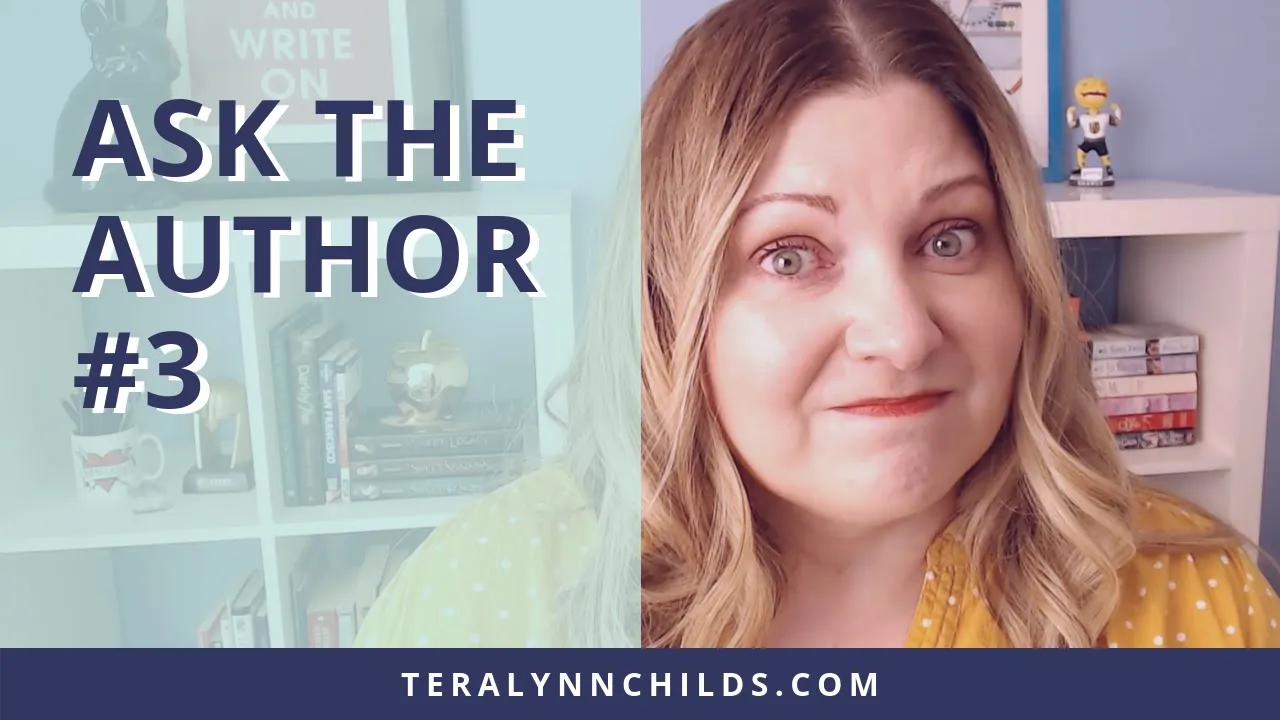Woot woot! I’m back with another ask the author post answering your questions about query letters, character descriptions, and which books were the most fun and hardest to write. So let’s get to them!
I recorded a video version of my answers, if you want to watch that.
Or keep reading if you prefer the written version.
My first question comes from a YouTube comment on my Ask the Author #2 video.
How do you write a query letter?
Writing a query feels like a super daunting task. It’s a little easier when you think about the actual purpose of a query letter. You’re trying to convince an agent or editor to want to read your book. End of story.
Part of the process involves doing your research first (like don’t submit your YA romance book to an agent who only represents adult thrillers). The rest is all about making sure you’re getting across what you need to convey.
When I was writing query letters, I used a three-part framework inspired by a workshop by Liz Maverick.
- The first paragraph is the HOOK. It’s the shortest paragraph and the goal is to give the reader something that grabs their attention and then the elevator pitch (a one-sentence teaser) for your story.
- The second paragraph is the SUMMARY. This is basically a mini-synopsis, hitting all of the major points of your story. If you’re familiar with or using a beat sheet, then this is probably just a list of the main beats. You don’t want to be clever or mysterious. Don’t say, “To find out what happens, request my book!” You want to give the conclusion (yes, give away the ending) so that the reader can see that you know how to construct and finish a story.
- The last paragraph is the RESUME. The purpose is to show that you are serious about your writing career. Put things in here that show you have researched the market, like the word count and genre of your book and maybe comp/similar titles so they can imagine the store placement. Also include any credentials you have, like contest wins or finals and any professional organization memberships (like SCBWI).
Don’t do anything too cute or clever (no frilly fonts or funny images) because you want to let the promise of your story do the work. If your story pitch can’t stand on its own, either the pitch needs work or your story needs work.
Note: This is just the method that worked for me. It’s not a rule or an absolute formula. It’s a starting point. The bottom line is you need to use the method that works for YOU and your story.
If you want to see my successful query letter (aka the one that got me my agent) you can read it (and other successful queries) on the Writer’s Digest blog.
My second question comes from my Ask the Author form.
How much do you describe a character?
The lame answer is: “As long as it needs to be.”
At a minimum, only put in things that the reader NEEDS to know about the characters. Something that informs more about them than just their appearance, something that will be important to understanding them.
Over the years, I have started using less and less description so that the reader will be able to use their imagination more. I want the reader (every reader) to be able to imagine themselves and the people in their world in the story. The less I force a description onto that character, the more readers (I hope) will be able to see themselves in them.
The most important thing about writing character description is to make it seem natural, like something the character would actually say/think about themselves/others. This is especially hard in first-person point-of-view books.
Look at how you think about yourself throughout a day, you’re probably not thinking:
“My chestnut brown hair is very frizzy.”
You’re more likely to think:
“Why can’t I get this brush through my frizzy curls?!”
If you can tie the description to the action, that makes it seem a lot more natural.
One of my favorite tricks is to have a character look at themselves in the mirror, maybe wishing something about their appearance was different. That’s not the healthiest self-image to reinforce, but it does let the character describe themselves in a way that feels believable.
Here’s an example of this from Forgive My Fins:

Bottom line is:
- as little as necessary
- connect it to an action
Hope that helps!
My final question also comes from my Ask the Author form.
Which books were the most fun and hardest to write?
Picking the hardest was super easy, but most fun? That depends on your definition of fun, I think, because every book has its own struggles and shining moments.
MOST FUN: Probably Oh. My. Gods. because I just started writing. I didn’t have a plot or even a plan and I just let myself follow Phoebe through the twists and turns.
This sense of fun is a feeling I am working on rekindling in my current writing process. Trying to plan less and dive in more.
HARDEST: The Sweet Venom trilogy, for sure! Each book has three first-person points of view. Gretchen, Grace, and Greer each have story arcs in each book and overall trilogy arcs. Which means it was like writing twelve books in one. No joke.
If I had to pick only one of the books, it would be Sweet Shadows. The middle book of a trilogy is insane! You have to wrap up and carry through plot threads from the first book, set up and continue plot threads for the third book, AND contain enough standalone plot threads to feel like a complete story. Yikes!
That’s it for this Ask the Author session.
As always, if you have a question you want me to answer next time, you can just drop it in comments below or submit it at teralynnchilds.com/ask.



How old is lily ‘s father from the forgive my fins series?
what is lily’s Fathers age the king?
Hi! Thanks for the fun Forgive My Fins questions!!! Just wanted to let you know that I answered them in my latest Ask the Author video (https://youtu.be/35S46jcpyhw) and blog post (https://teralynnchilds.com/ask-the-author-4/). If you have more Qs, don’t hesitate to ask!!